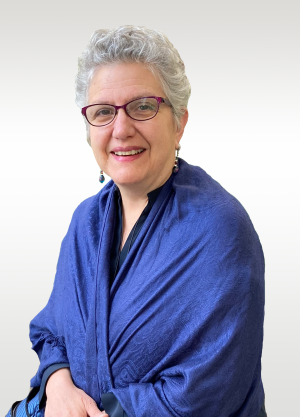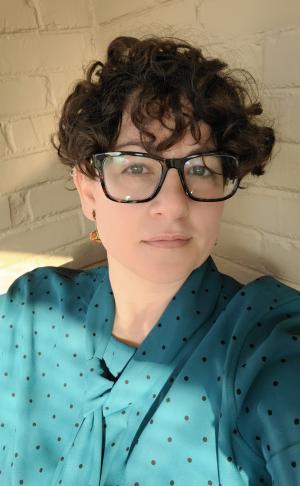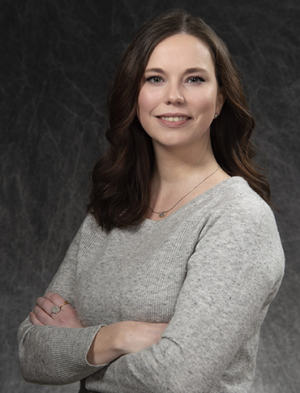HWW Co-Written Chapter on Public Humanities Published
Reciprocal and Redistributive Research Methodologies in Practice
Antoinette Burton (HWW PI), Jenny L. Davis (HWW Consultant on Ethical Methods and Reciprocal Community Partnerships), and Peggy Brennan (HWW Associate Director) co-wrote a chapter that will be published in the Routledge Companion to Publicly Engaged Humanities Scholarship. Titled “Reciprocity and Redistribution: Methodologies for Rethinking Public and Community-based Humanities Research,” the essay offers a history of how Humanities Without Walls has taken up the promises and challenges of the public humanities.

In their contribution to this collection, Burton, Davis, and Brennan chart the development of “R&R” methodologies in the Grand Research Challenge awards—telling the story of what interdisciplinary collaborative grant-making has become over the life of the grant since 2015, as a result of both recent convulsive social and political changes and of the longstanding underlying conditions of economic inequality and racial injustice that are an ongoing feature of contemporary life. In the process, they reflect on the stakes of the “publics” in the public humanities at this historical juncture.
We spoke with them to learn more about their experiences co-writing the piece. The key themes identified in our conversation below serve to guide readers when engaging with the questions at stake in the essay.
Thinking capaciously about public humanities
JD: Our chapter invites people to think really intentionally about “who is this public?” Be specific about who the public is because Humanities Without Walls is very specific about who the collaborators and the audiences and the co-creators are. It’s not a generic public. I do think that there’s a danger when sometimes the public can just mean the people who look the most like the academy. We were trying to think the most capaciously about public humanities, acknowledging that it is not a homogenous category. That is a thing that is exciting about Humanities Without Walls, and when we were trying to think about an edited volume on public humanities, we were figuring out how to fit ourselves within that rubric.
PB: What’s at stake for the people involved? I would say that varies greatly depending on where that person stands. What’s at stake for a faculty member at an R1 institution, a predominantly white institution, will vary greatly from what’s at stake for a community partner who maybe has a different background, a different occupation, not to speak of expertise at all—but their place in society. What’s important and at stake, regardless of where people stand, is communication among all members of the collaboration. It is really crucial to understand how those different structures affect that.
The strength of the HWW grant, in its most current form, is its methodological commitment to reciprocity and redistribution (R&R), but it is important to not stop with rhetoric around these methods. It is one thing to say that a project is equitable, to say that it has non-hierarchical collaborations with its non-academic partners, however in considering the reality—of those methods being applied, we need to take a look at the material ways that collaboration is supported. A great example of that would be when an individual is working alongside community partners and collaborating with them on equal terms, however, their budget could reveal how they're being compensated. The budget document is a test of the extent to which these methods are actually applied to research projects.
Different manifestations of intellectual labor

JD: We have to re-think about how we understand what the beginning of things are and what people contribute. This chapter, to me, started at the beginning of HWW, at the beginning of this round of the grant. The writing of the chapter includes every conversation that we had. That kind of communication and thinking about contributions —even though the outcome may show up like three years later and in a particular format, means actually recognizing all of the contributions across the entire life of the project. That’s also a place where the standard model of the academy likes to give credit to who the “big thinker” was and not all of the people who helped them get to this place.
PB: One of Antoinette and Jenny’s insights that I appreciated was that intellectual contribution can come in various ways and look different, depending on the way the project is organized. For example, we have conversations about how, if HWW were a lab, I would be in the lab most days, and they are kind of like the PI who pokes their head in here and there. That's very unique to the humanities: to look at intellectual labor and the different ways that intellectual labor can manifest. Working among different disciplines, as Antoinette, Jenny, and I are doing, allows you to think more creatively about what labor looks like.
AB: Collaborative, reciprocal and redistributive work is not for everybody. And I don’t think the goal of an HWW project is necessarily to suggest that that's how all work should happen. People should let themselves lean into opportunities to experience the joy of collaboration, what it can yield and how it can fulfill desires and things that cannot be met in other academic settings—or not. Like anything, when it goes really well, there are so many dimensions of joy and pleasure in it. Not least of which is knowing that you actually served the needs and ambitions of someone in the community.
Moving toward a co-created model of community-based research
JD: Co-creation is to acknowledge that most, if not all things, are already kind of co-created, right? In conversation with the things we read, the people we talk to, the things we observe. Instead of trying to argue—it is a shift toward practicing things in a new way, but also recognizing that’s part of how we do things already. It is viewing research and viewing work as non-competitive and non-hierarchical. Not because power structures are absent or that everybody has the same reasons for doing it or the same things they get out of it. When we have multiple people contributing things, it’s actually a more accurate reflection of how thinking happens and work happens.
It moves us away from some of the metaphorical walls that have excluded people from research, excluded people from the university. But [these walls] have also buffered and protected people from having to be accountable for the things that they chose to produce.
AB: It’s very challenging, in part, because for those of us who came up in conventional academia and in the last twenty years, we have had to unlearn a lot of the things that we spent a long time learning. The things that we learned—that were drilled into us—were the notions of this single shingle, visionary model. It’s all about displaying your mastery and your disciplinary chops. It’s a test of your mettle. And if you can pass the test, then you have entry into the prestige economy of academia. Creating an authentic, radical, community-based and community-engaged set of practices around scholarship requires not just unlearning those things, but undesiring them for some people. It's challenging because so many people's identities are bound up in the single author book, the heroic feat of accomplishment, and there’s a lot of emotion around that.
PB: For me what’s at stake, as a historian, is using these R&R methodologies in the spirit of righting historical inequalities and hopefully redressing some of the negative impact that institutions of higher education have had on their local communities and in communities on which research has historically been done. I use the word “on” rather than “with” because that is the big shift here with this project. It is meant to be collaborative, as opposed to extractive, and the latter has characterized much of the work done by predominantly white institutions. I should add this caveat that faculty researchers of color have been doing this work with community partners. It is not to say that no one has been doing it this way. We want to make sure that these methods are more in place throughout predominantly white institutions and to push back against these historical inequalities and to redress some of those strained relationships.
Evolving, reciprocal, and redistributive community partnerships

PB: Doing slow work is really crucial. Among people who work within institutions of higher education…there is a sense of urgency that comes with hierarchical practices. We, as equitable collaborators with community partners, need to relax our ideas about timelines and understand that the relationship building that’s required of the work is slow work. To really build this into project timelines…that process is sometimes amorphous and difficult to assess. It’s not quantifiable, but nevertheless, it’s crucial to the overall project.
JD: There has to be flexibility, communication, and humility. You have to be having conversations and be able to discuss the little things and the things that are going well. That sets the stage for how you discuss things when they don't go so well. Regular communication, respectful communication is really key. Regularly checking in about things and how they’re going. Not because things have to be going bad for you to have a conversation, but if you're checking in, you might catch things before it gets to a point where they might be. Nothing goes the way we planned, and it wouldn't be interesting if it did. If I can predict exactly how everything is going to come out, without having done it, then why do it?
PB: We move towards a co-created model for community-based research by approaching the project of research as co-questioners, co-signers, and non-hierarchical collaborators to the extent which structures allow. Of course, we are all limited by the policies of our organizations and other considerations, but approaching collaboration with research partners to me is the first and most important way to move forward to that co-created model.
AB: A lot of people and marginalized communities get bruised, inconsiderately treated, disregarded, or excluded along the way. The ethos of care and repair is in direct response to a kind of hegemonic notion of professionalism. At the heart of care and repair is a sense of accountability to all the relations that we dwell in, even if those relations are structured for us, whether or not necessarily that they are relations that we choose. Even if we would not choose a hierarchical structure, we are still in it. Owning all of that and being hyper attentive through self-knowledge but also self-critique about what role you play in the power hierarchy and how you could, perhaps at best, blunt the power that this hierarchy confers upon you. Or transform it or undo it.
Interview by Heather Ennis and Bridget Sullivan
Published on April 2, 2024